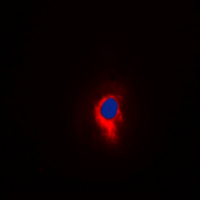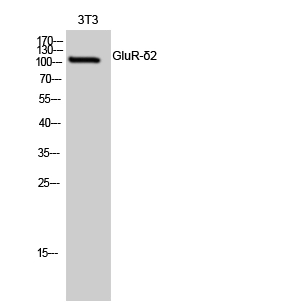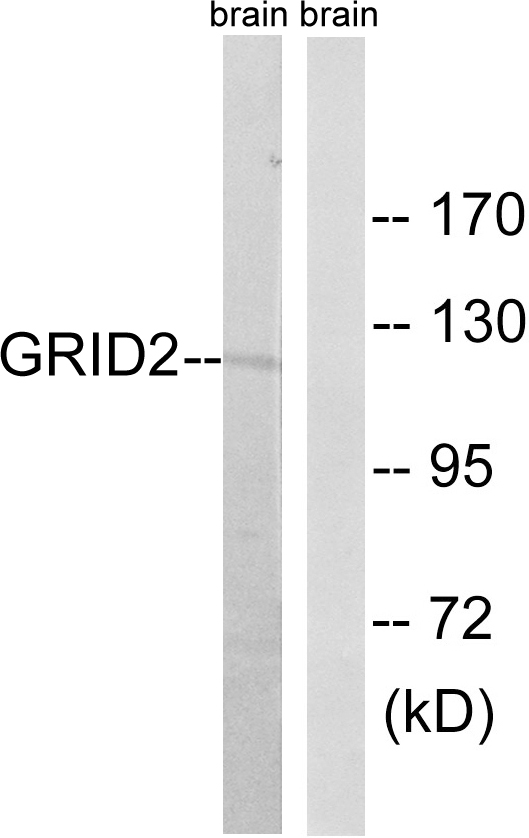
ICC/IF analysis of formalin-fixed HEK293T cells using GTX56101 GRID2 antibody. Red : Primary antibody Blue : DAPI Permeabilization : 0.1% Triton X-100 in TBS for 5-10 minutes
GRID2 antibody
GTX56101
ApplicationsImmunoFluorescence, Western Blot, ImmunoCytoChemistry
Product group Antibodies
TargetGRID2
Overview
- SupplierGeneTex
- Product NameGRID2 antibody
- Delivery Days Customer9
- Application Supplier NoteWB: 1:500 - 1:1000. ICC/IF: 1:100 - 1:500. *Optimal dilutions/concentrations should be determined by the researcher.Not tested in other applications.
- ApplicationsImmunoFluorescence, Western Blot, ImmunoCytoChemistry
- CertificationResearch Use Only
- ClonalityPolyclonal
- ConjugateUnconjugated
- Gene ID2895
- Target nameGRID2
- Target descriptionglutamate ionotropic receptor delta type subunit 2
- Target synonymsGluD2; gluR delta-2 subunit; glutamate receptor delta-2 subunit; glutamate receptor ionotropic, delta-2; glutamate receptor, ionotropic, delta 2; SCAR18
- HostRabbit
- IsotypeIgG
- Protein IDO43424
- Protein NameGlutamate receptor ionotropic, delta-2
- Scientific DescriptionThe protein encoded by this gene is a member of the family of ionotropic glutamate receptors which are the predominant excitatory neurotransmitter receptors in the mammalian brain. The encoded protein is a multi-pass membrane protein that is expressed selectively in cerebellar Purkinje cells. A point mutation in the mouse ortholog, associated with the phenotype named lurcher, in the heterozygous state leads to ataxia resulting from selective, cell-autonomous apoptosis of cerebellar Purkinje cells during postnatal development. Mice homozygous for this mutation die shortly after birth from massive loss of mid- and hindbrain neurons during late embryogenesis. This protein also plays a role in synapse organization between parallel fibers and Purkinje cells. Alternate splicing results in multiple transcript variants encoding distinct isoforms. Mutations in this gene cause cerebellar ataxia in humans. [provided by RefSeq, Apr 2014]
- Storage Instruction-20°C or -80°C,2°C to 8°C
- UNSPSC12352203







